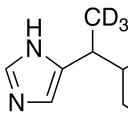Morin Suppresses Astrocyte Activation and Regulates Cytokine Release in Bone Cancer Pain Rat Models.
Słowa kluczowe
Abstrakcyjny
As inflammatory and immune responses are involved in pathophysiology of debilitating neuropathic pain, reagents that can modulate these two responses may have therapeutic potential. Morin, derived from the moraceae family of plants, benefits inflammation-related diseases, but its antinociceptive effects on cancer pain remain elusive. In the present study, we investigated antinociceptive effects of morin on bone cancer pain using a rat model, where rats were subject to implantation of Walker 256 mammary gland carcinoma cells into the tibia. Morin (5-20 mg/kg) dose-dependently attenuated behavioral hypersensitivities, including mechanical allodynia and free movement pain, which was accompanied by downregulation of astrocyte marker glial fibrillary acidic protein in the spinal cord in cancer-bearing rats. Treatment with morin also induced reduction of pro-inflammatory cytokines TNF-α, IL-1β, and IL-6 and upregulation of an antiinflammatory cytokine IL-10. Furthermore, intrathecal injection of AM630 (an antagonist of cannabinoid receptor 2, CB2 ), but not naloxone (an antagonist of opioid receptors), significantly blocked morin attenuation of behavioral hypersensitivities. Taken together, these results suggest that morin suppresses astrocyte activation and neuro-inflammation induced by bone cancer pain and its antinociceptive effects on bone cancer pain may be associated with activation of CB2 receptors in the spinal cord. Copyright © 2017 John Wiley & Sons, Ltd.





